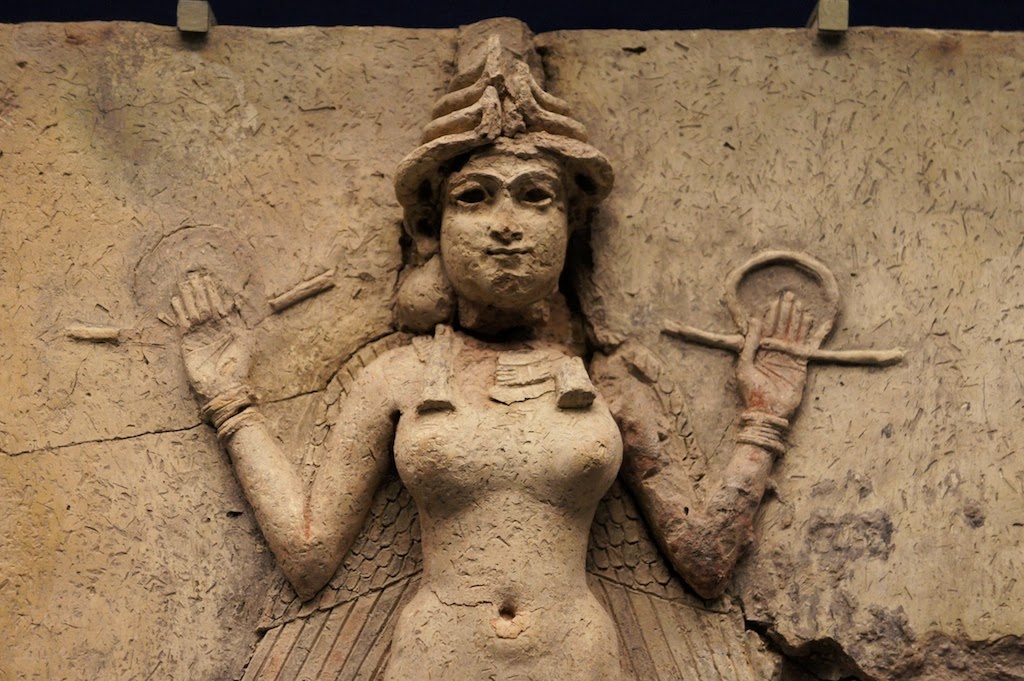Now, that's what I call an artefact! A mysterious goddess
depicted in high relief on a clay plaque, her taloned feet resting on the backs
of two lions and flanked by two owls. With long wings falling from her shoulders, she wears a horned
headdress and carries a rod and ring in each hand. She looks
either imperious or amused, but either way, it's pretty safe to say you
shouldn't mess with her. That's how I like my goddesses to look.
The Queen of the Night hails from ancient Mesopotamia, and has been dated to the reign of Hammurabi,
ruler of Babylon from 1792 to 1750 BC. Such unusually precise dating was aided
by the similarity between the depiction of the Queen and that of the
sun god Shamash on the famous Code of Hammurabi stele, now in the Louvre. The stele
shows Hammurabi standing before Shamash, whose headdress is the same as that
worn by the mysterious Queen.
Who is the Queen of the Night?
The Queen of the Night used to be known as the 'Burney
Relief'. Art dealer Sydney Burney bought the relief in 1936 from dealer Selim
Homsey, who probably acquired the plaque in Iraq sometime during the 1920s. The
British Museum acquired the relief in 2003, for the princely sum of £1,500,000.
As to who she is, that is still a matter of some speculation. She is a goddess, of that we can be sure. Her horned
headdress and the rod and ring symbols that she carries in both hands are symbols
of divinity. In the absence of an inscription, however, we can't be totally sure of the
identification, but two possibilities stand out - Ishtar or Ereshkigal.
In ancient Mesopotamian mythology, Ishtar and Ereshkigal
were sisters, although there was little love lost between them. The plaque has
elements that would fit with one or the other.
Ishtar
Ishtar, the goddess of love and war, was usually depicted
with a rod and ring in one hand and a scimitar in the other, and was associated with lions. So far, so similar. She was often
depicted with wings, although they rarely hung down as in the Queen of the
Night relief.
Ereshkigal
Ereshkigal was the goddess of the underworld, the 'Queen of
the Great Below'. The lowered wings, the owls, the dark background - they are
all features associated with the Underworld. Unfortunately, as Ereshkigal has
no known iconography, as her association with death meant artists avoided
depicting her, there is no way to be definitive.
So the mystery remains, which I have to admit, I rather like.



No comments:
Post a Comment